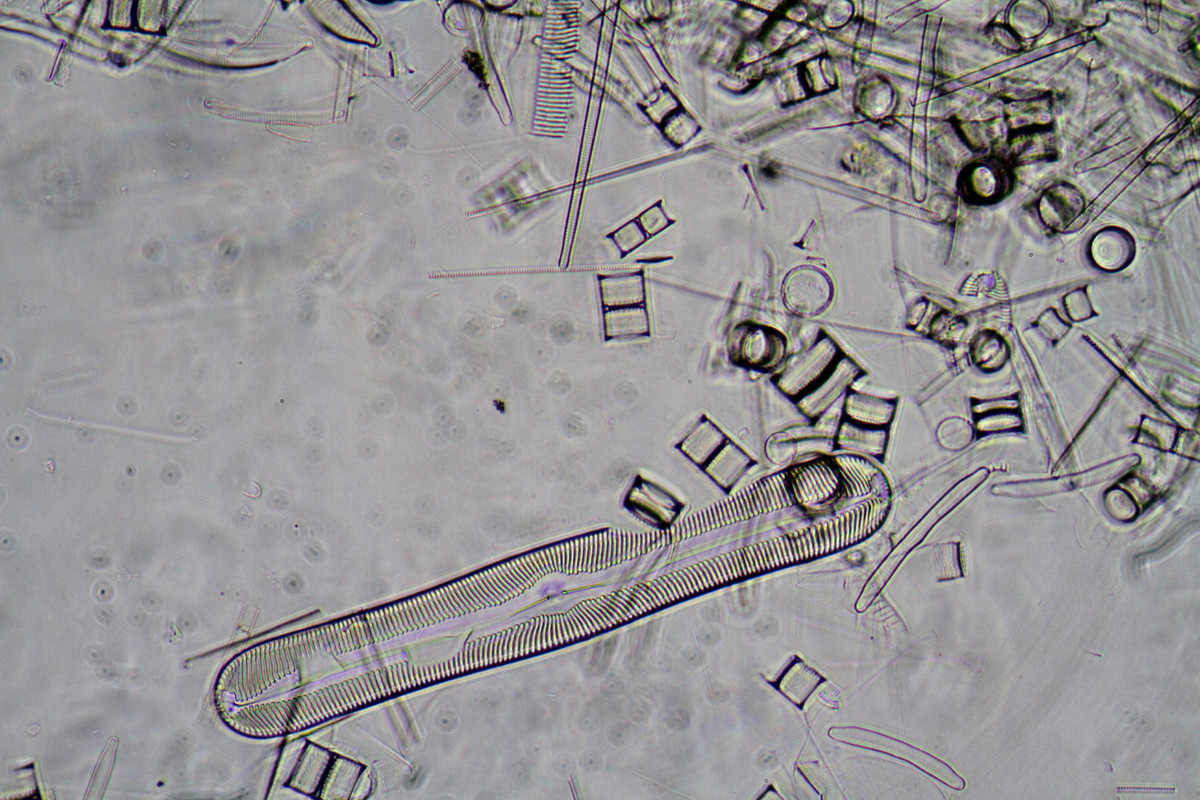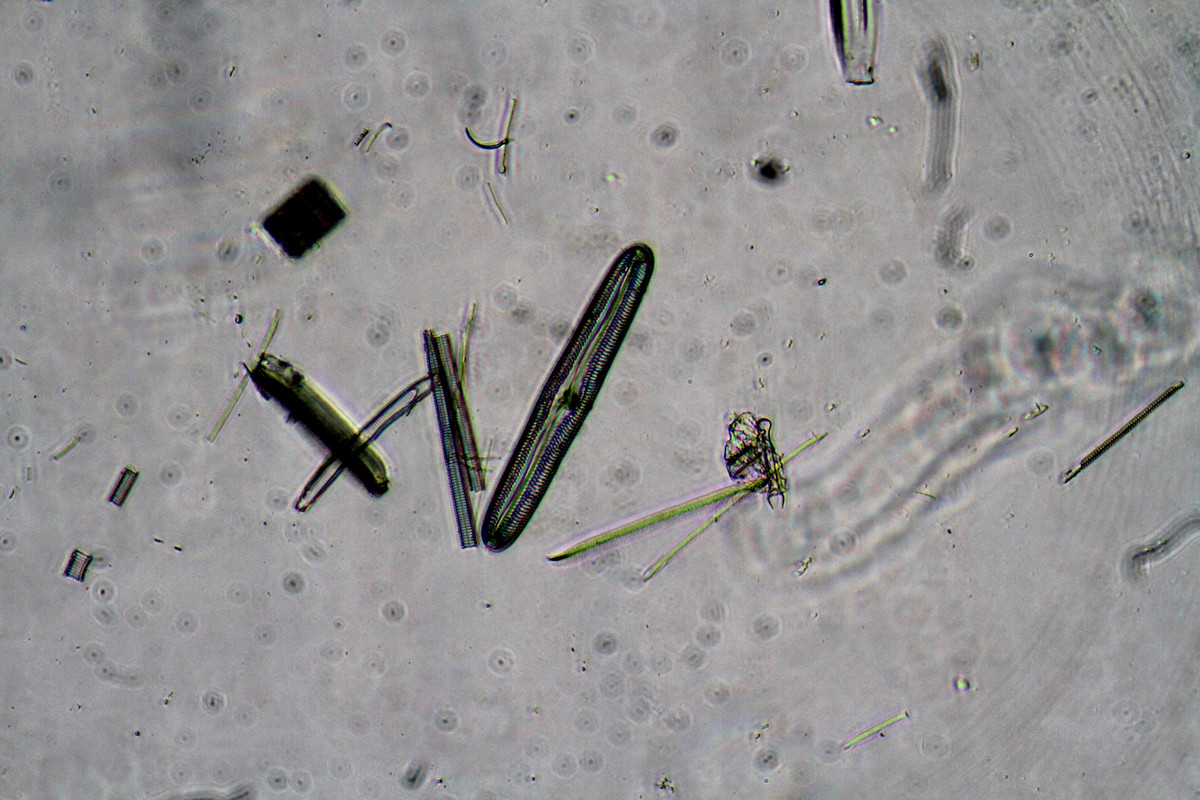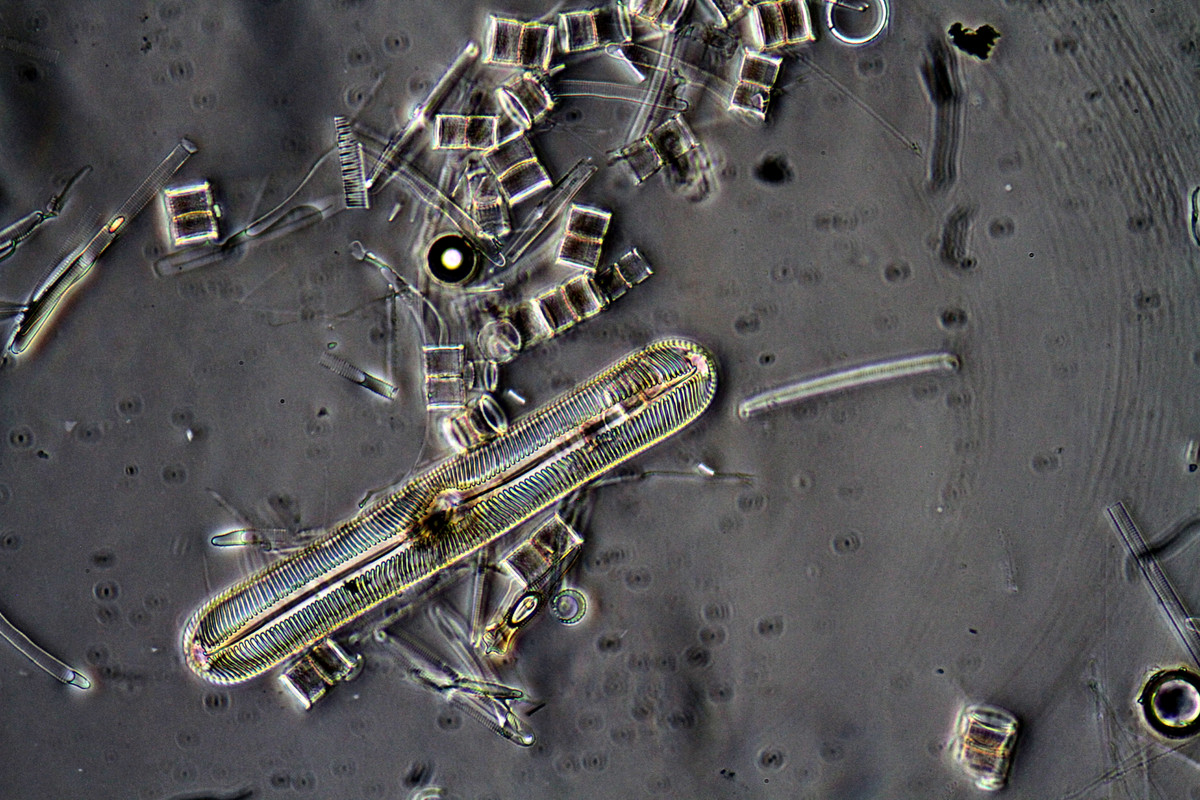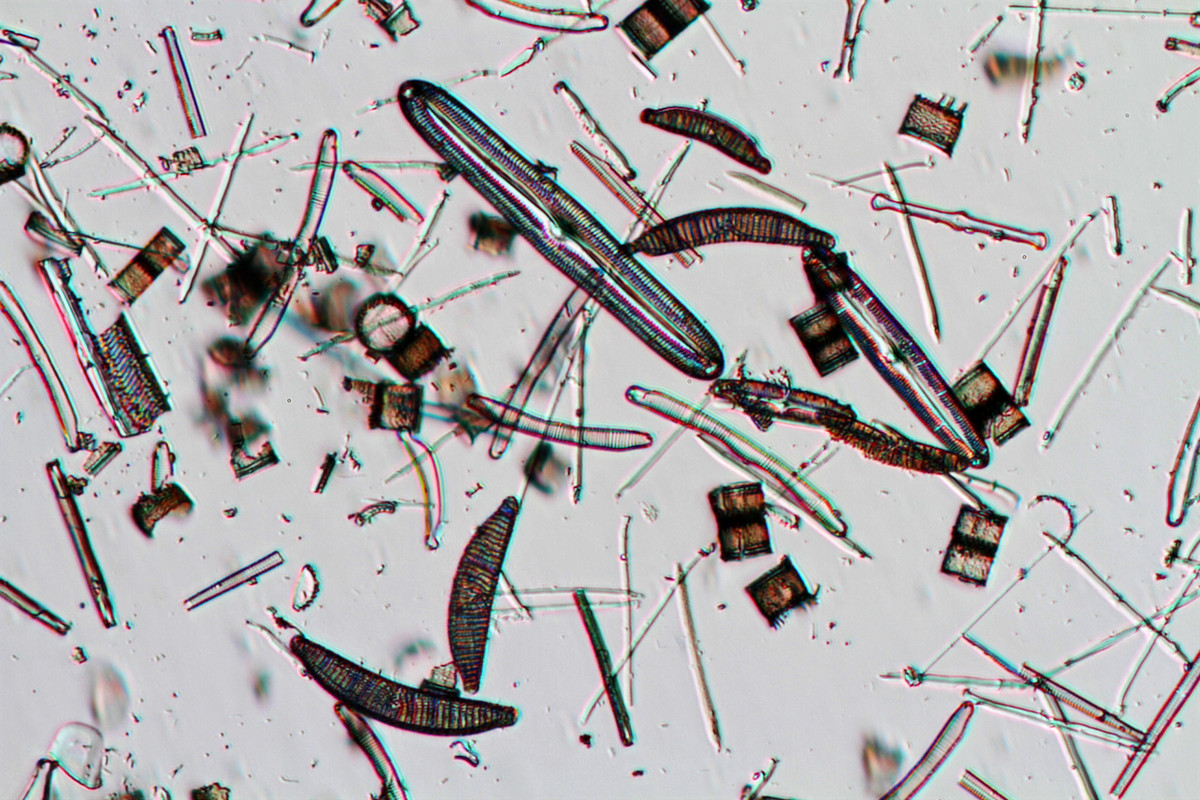I bought a small kit of Soft, Thick and Thin UV hardening lacquer for making trout flies.
I wanted to try a mounting Media that was the consistency of Canada Balsam, but was easier to find and would dry hard enough to hang upside down in the inverted microscope in less than a week. I used the thin variety which flows like diluted Canada balsam.
I had purchased a small sample of cleaned diatoms from Diatoms.com in the Netherlands.
These are small samples, and I didn't want to waste them learning how to mount them, so I did some experiments with diatomacious earth.
Once I found the proper consistency to get a strew that was not so choked with diatoms as to be useless, I started working with my precious little sample.
What worked for me was to place the sample on a coverslip. I use a slightly cloudy drop but no thick chunks. I let this air dry, and then drip the media onto the slide surface and drop the coverslip with the dried sample face down onto the mounting media. A light tap to clear any bubbles, but be careful not to slide the coverslip around on the slide as this will damage the diatoms. That fantasy of getting a perfect slide on the first try will be dashed, but you will have fun working out the bugs.
Here is a comparison of three different materials:
UV glue, Clear nail polish, and Canada Balsam diluted with xylene. (Please take necessary safety precautions handling this type of preparation)
These are all one shot, no stacking. The important thing is the mounting medium, right?
Olympus IX70, 20x objective, Canon EOS 7D
First is 2 shots of a slide I mounted with UV glue:
First in HMC
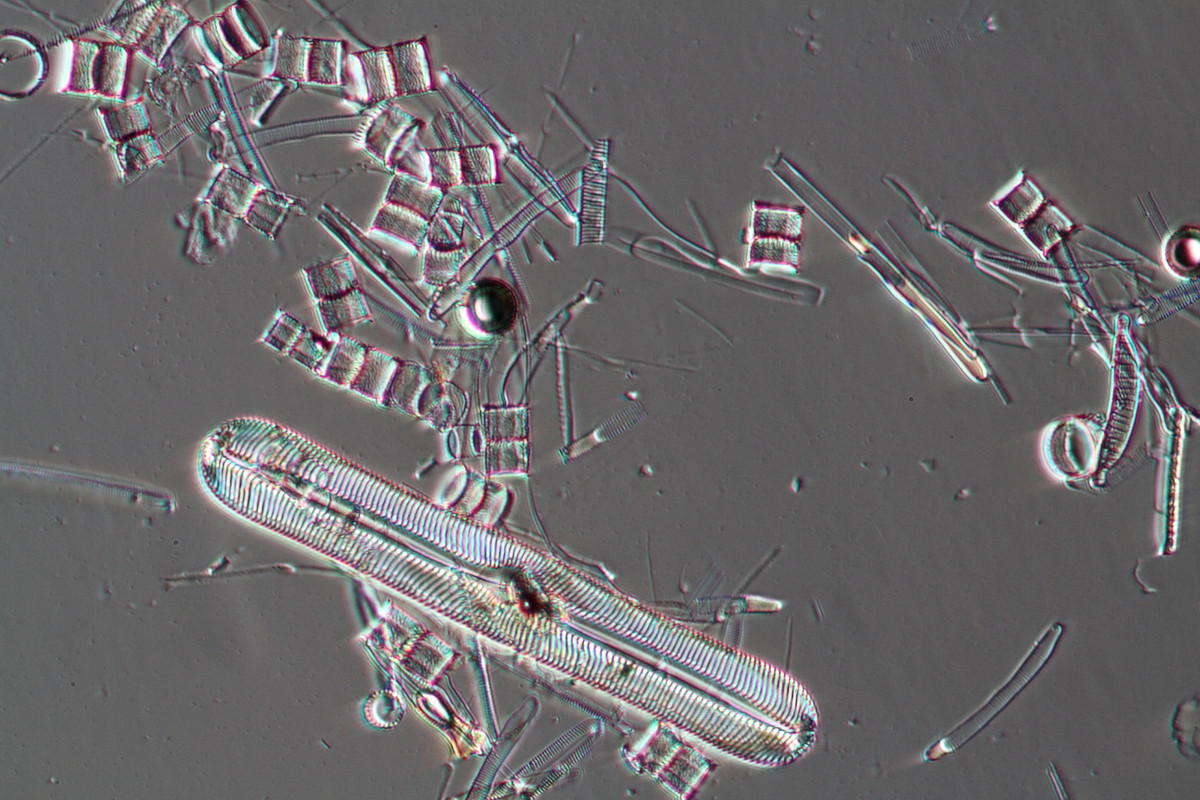
And in Brightfield
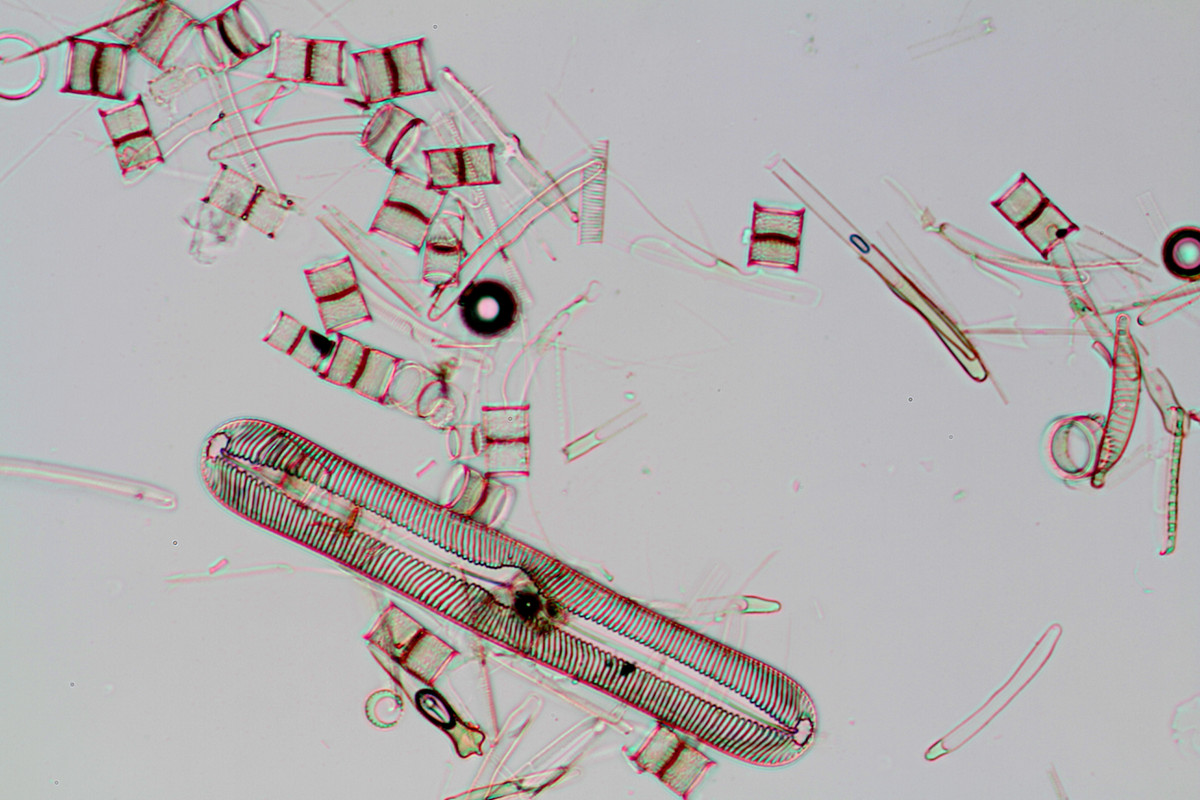
These next two are mounted in clear nail polish
HMC
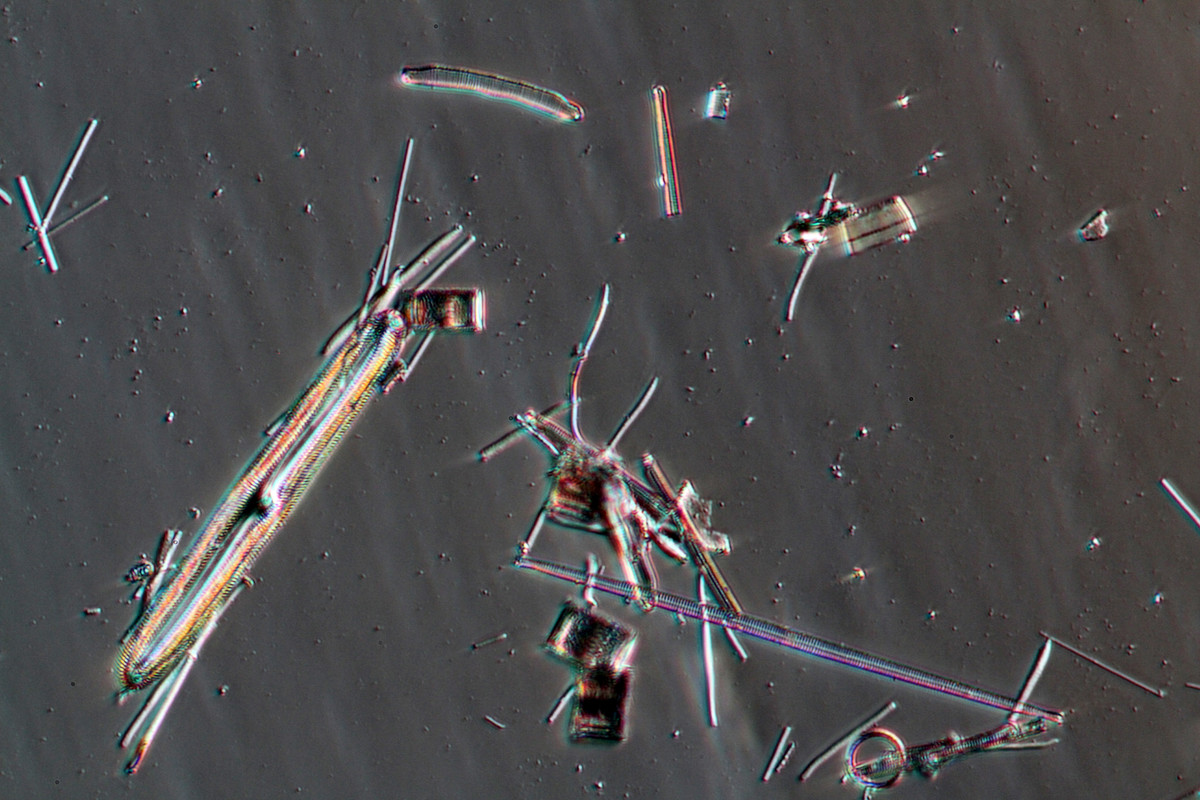
Brightfield
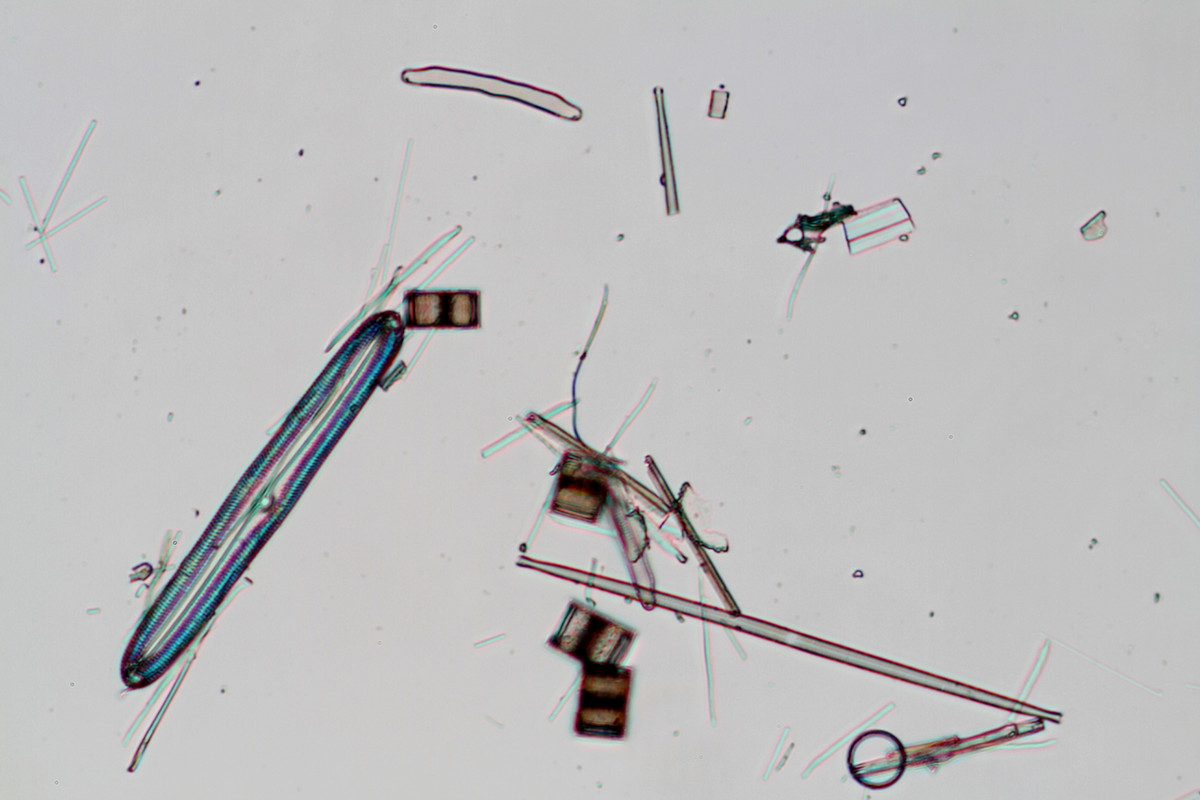
And finally a pair mounted in Canada Balsam
HMC

Brightfield

I see some real differences in HMC, I couldn't tell you the refractive index of any of them.
The major problem with the UV cement is bubbles. Will have to try putting the slide in a vacuum chamber while it is still liquid, then into the ultraviolet light.
I don't believe i'm ready to chuck the method by a long shot.
The mounts of insect parts I made were too thick for the thin glue, but the thick variety builds up nicely around the specimen and gets a bead around the cover-slip not unlike a Carolina slide.
Curing a deep mount in UV can get shadows around the specimen if you don't get coverage all around.
Also not a great idea to set the slide on top of a UV flashlight with multiple LEDs as they burn a pattern into the mount which is invisible in brightfield but can be seen faintly in phase contrast or HMC. They show up well if you shine a UV flashlight on them.
Personally I prefer the Nail Polish for brightfield, and Canada Balsam for HMC, but stacking just might change that opinion.
Enjoy,
Radazz
